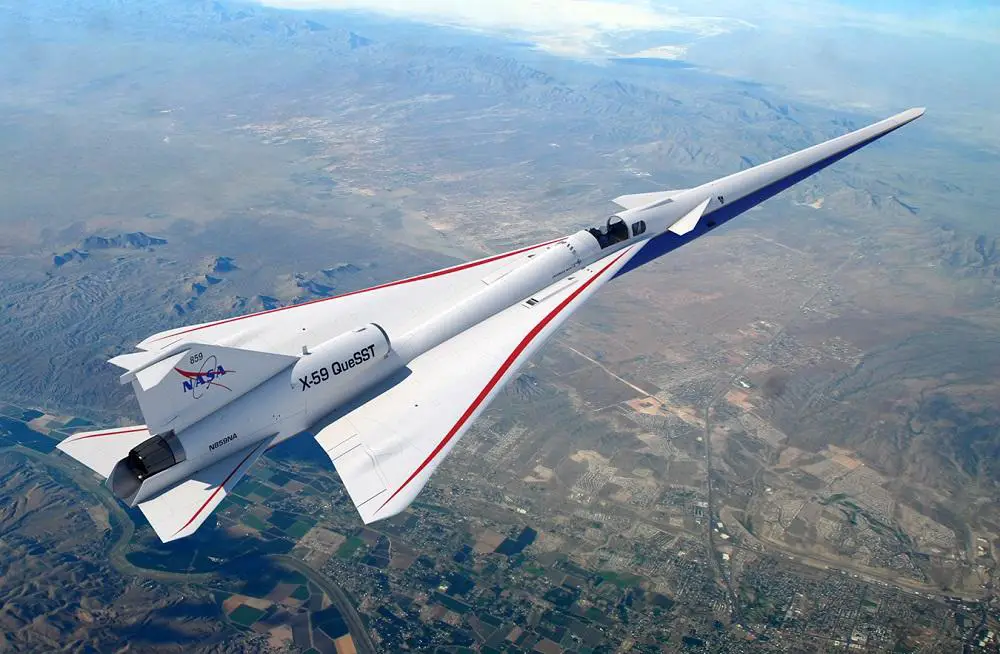2021 saw significant milestones achieved in the assembly of NASA’s X-59 Quiet SuperSonic Technology aircraft (QueSST), and all eyes now look forward to a pivotal 2022. Following the X-plane’s temporary move from Lockheed Martin’s Skunk Works in California to their facilities in Texas, the X-59 is set to start 2022 with critical ground testing, as progress continues toward NASA’s target of the aircraft’s first flight later this year. The X-59 is designed to reduce the loudness of the sonic boom, which occurs when an aircraft flies faster than the speed of sound, to a gentle, quiet sonic “thump”.
While in Texas, ground testing of the X-59 will be done to ensure the aircraft can withstand the loads and stresses that typically occur during flight. The team will also calibrate and test the fuel systems before the X-59 makes the journey back to California for more tests and completion. The X-plane will demonstrate this in flights over communities around the U.S. starting in 2024, as NASA collects data that could open the future to commercial supersonic flights over land.

The Lockheed Martin X-59 QueSST is an American experimental supersonic aircraft being developed at Skunk Works for NASA’s Low-Boom Flight Demonstrator program. Preliminary design started in February 2016, with the X-59 scheduled for delivery in late 2021 for flight tests from 2022. It is expected to cruise at Mach 1.42 (1,510 km/h; 937 mph) and 55,000 ft (16,800 m), creating a low 75 Perceived Level decibel (PLdB) thump to evaluate supersonic transport acceptability.
The Low-Boom X-plane will be 94 ft (29 m) long with a 29.5 ft (9.0 m) wingspan for a maximum takeoff weight of 32,300 lb (14,700 kg). Propelled by a General Electric F414 engine, it should reach a maximum speed of Mach 1.5 or 990 mph (1,590 km/h), and cruise at Mach 1.42 or 940 mph (1,510 km/h) at 55,000 ft (16,800 m). The cockpit, ejection seat, and canopy come from a Northrop T-38 and the landing gear from an F-16 Fighting Falcon. Its engine will provide 22,000 lbf (98 kN) of thrust. The ground noise is expected to be around 60 dB(A), about 1/1000 as loud as current supersonic aircraft.















